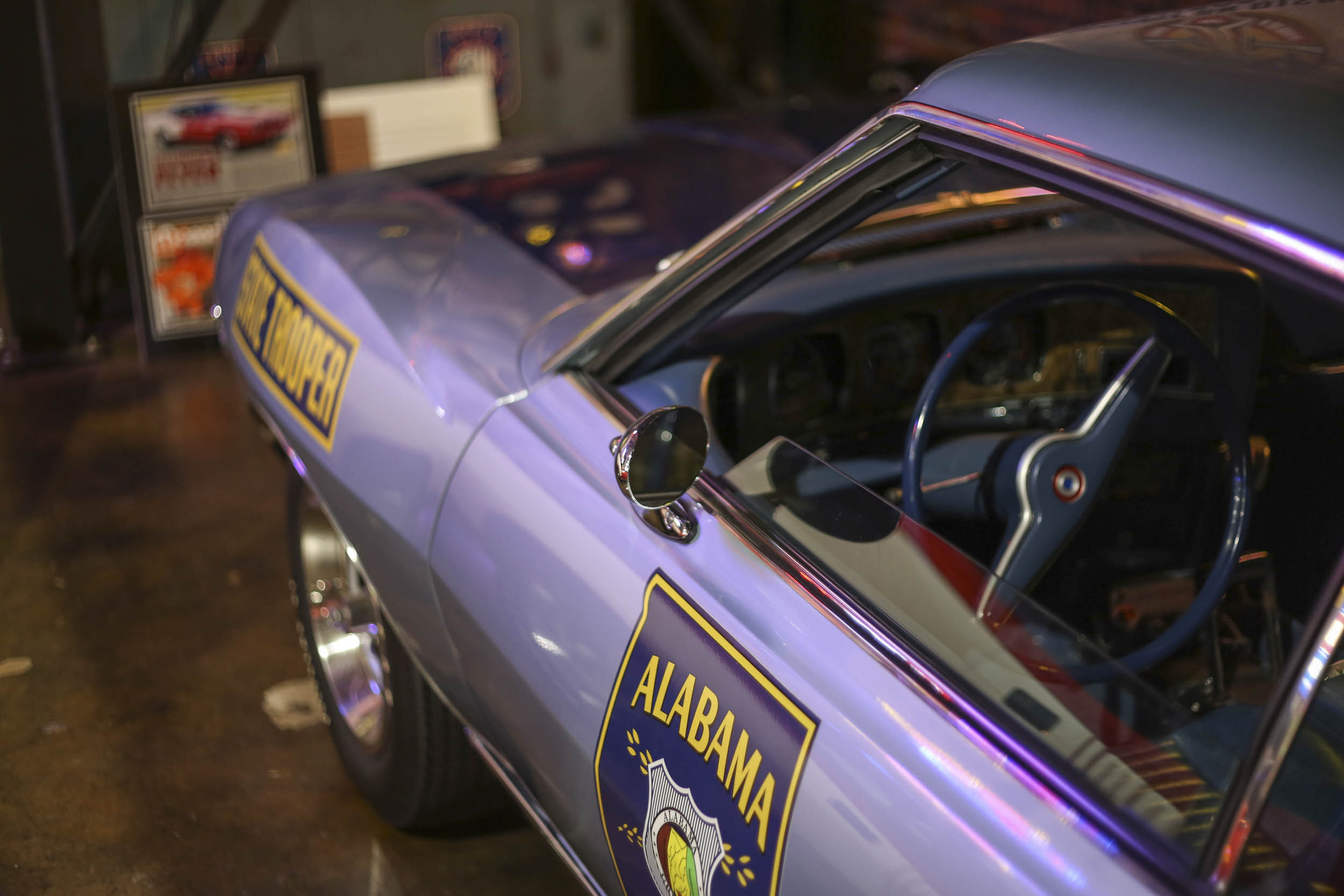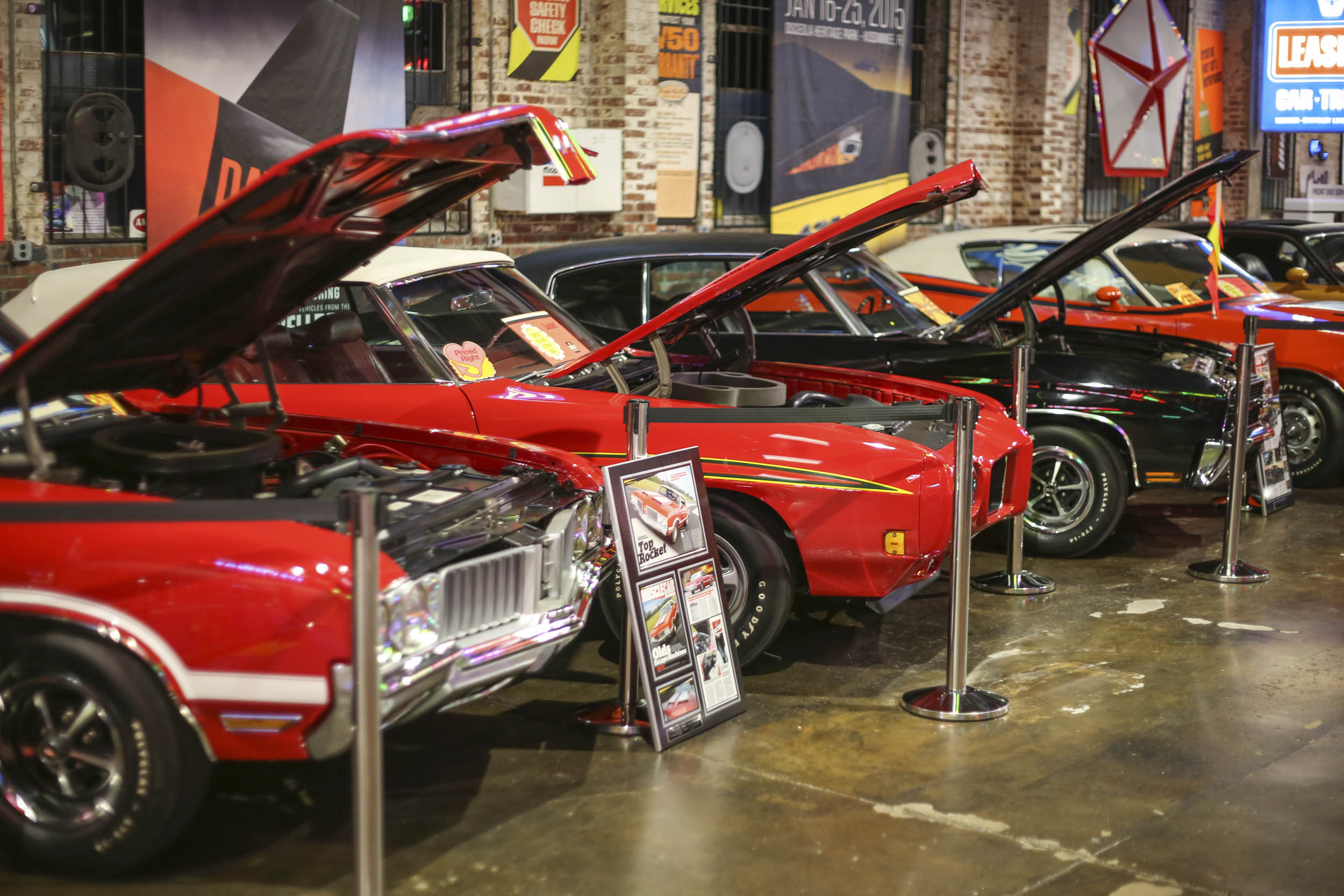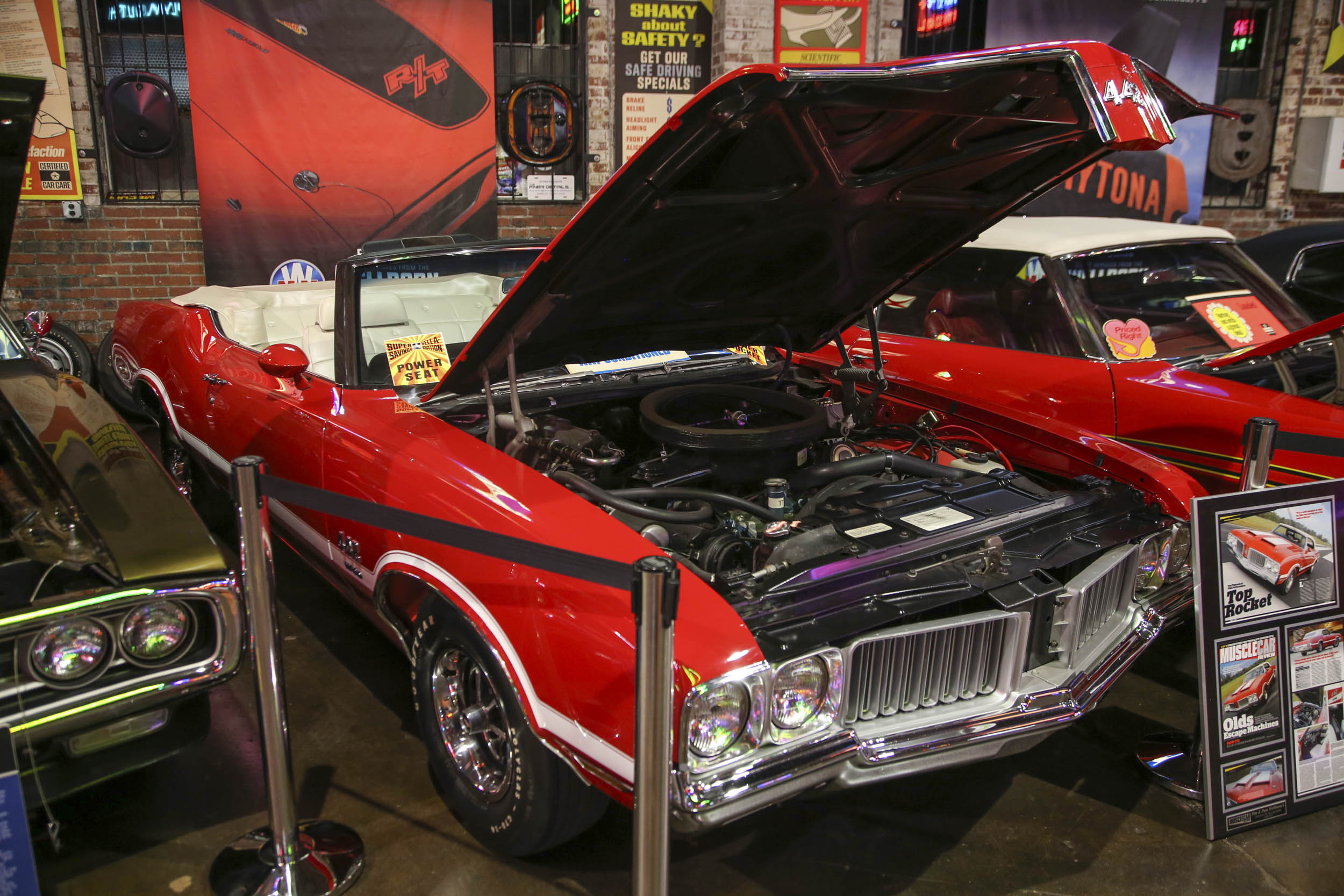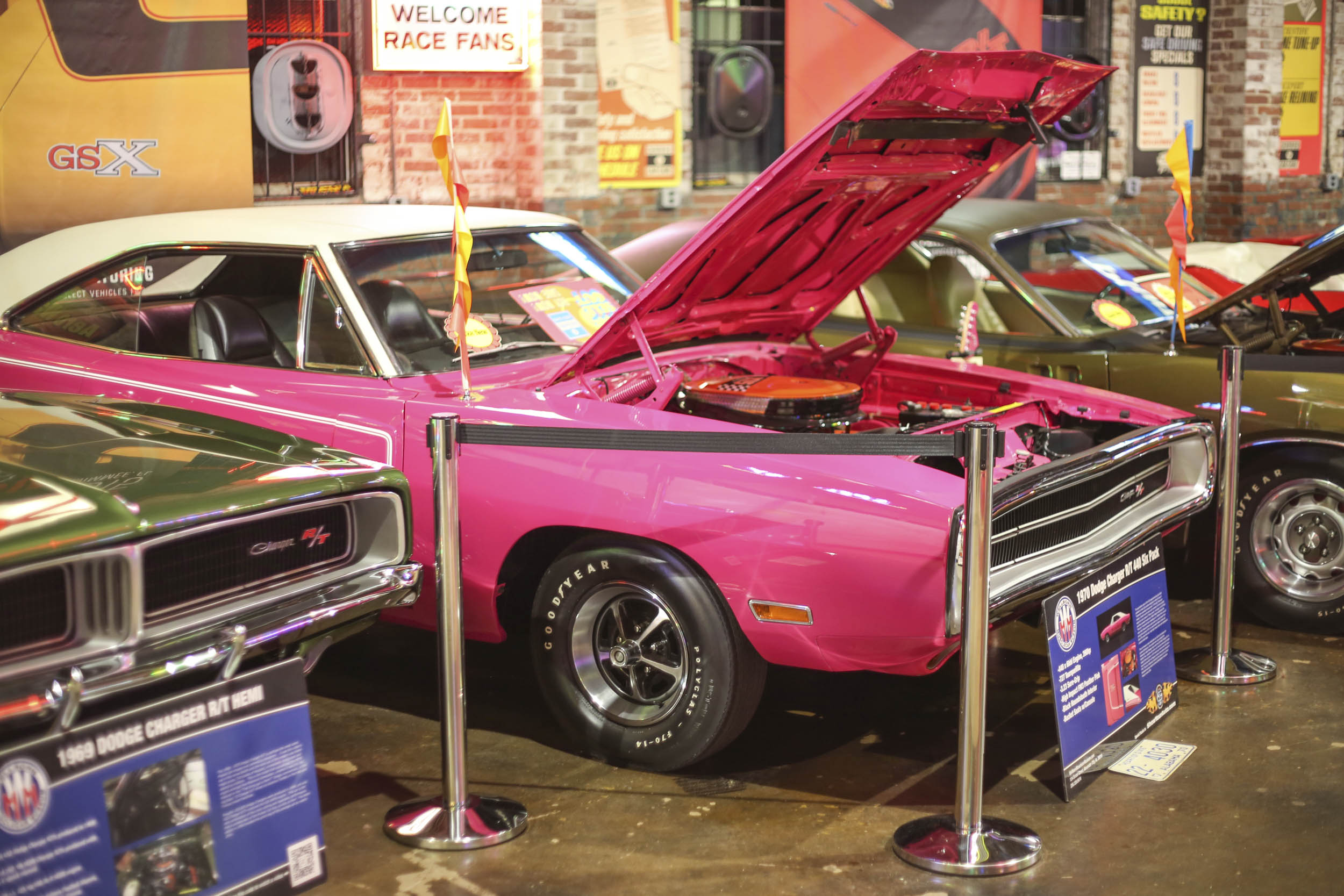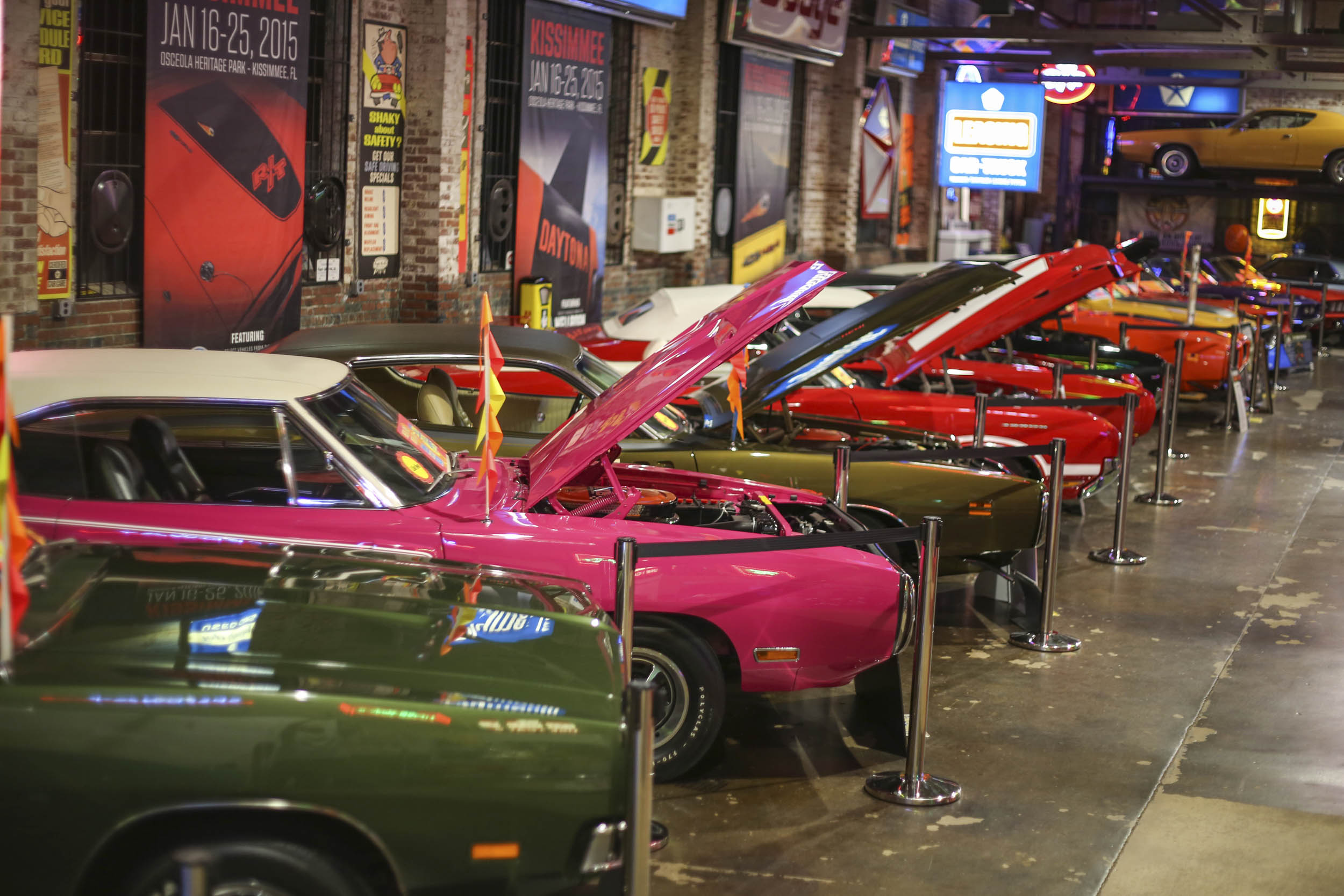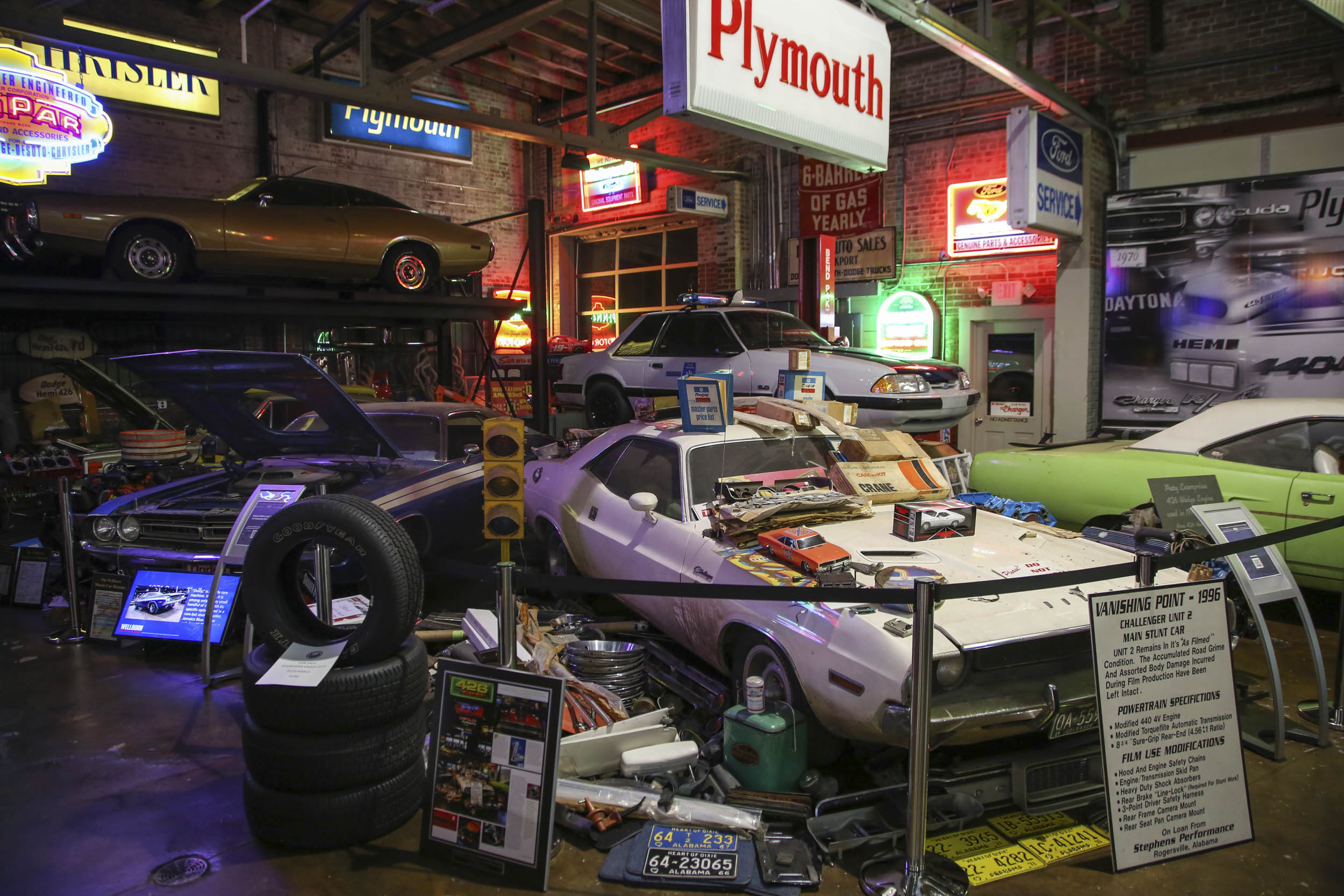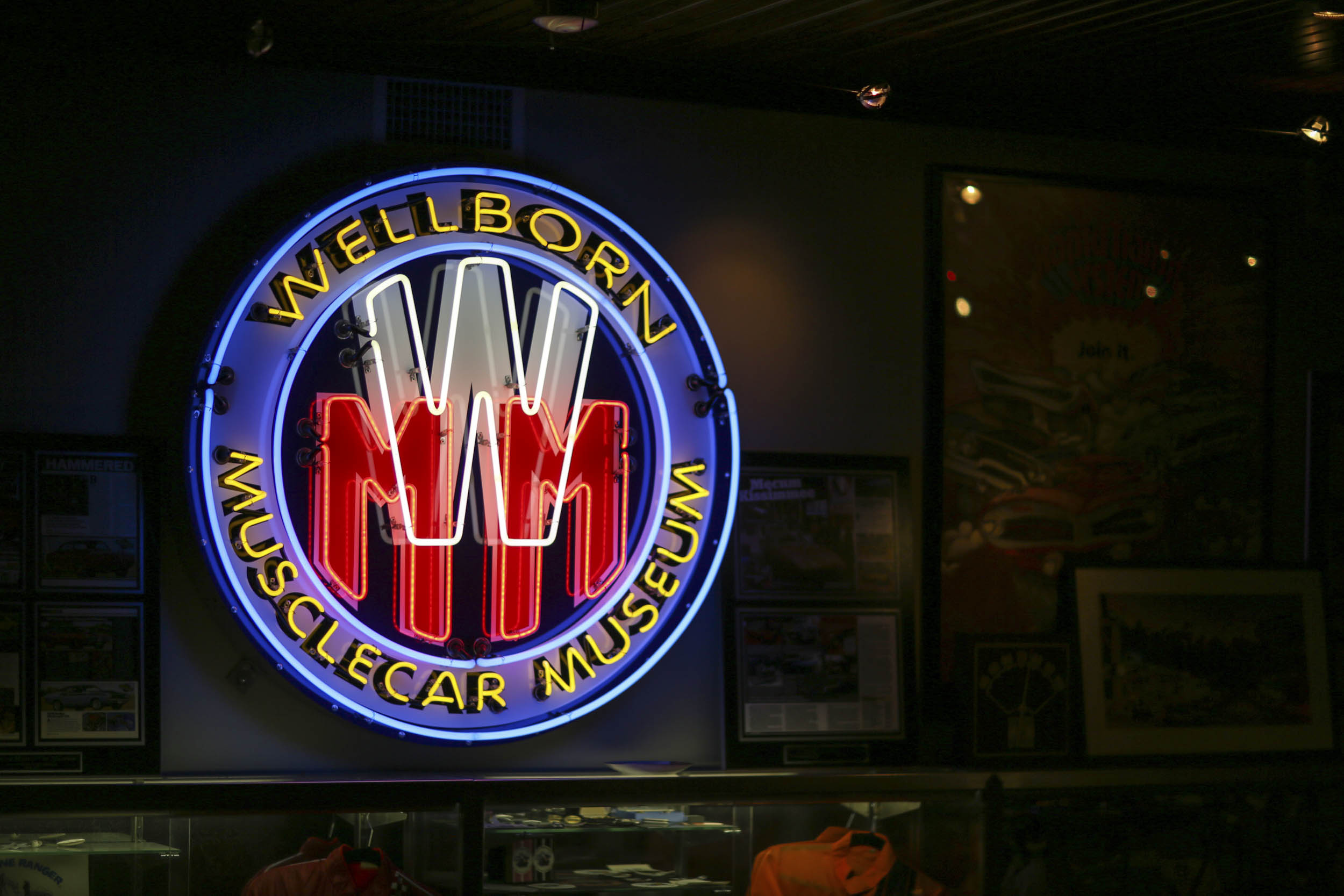A peek inside the muscle-packed Wellborn Museum
The sights and sounds of the K&K Insurance Dodge Charger Daytona thundering past him on the banked turns at Talladega in 1969 made Tim Wellborn an instant fan of the 426 Hemi. The “win on Sunday, sell on Monday” mantra worked on the Wellborn family, as Richard Petty’s NASCAR domination in the seasons that followed helped Tim’s father make the decision to buy a ’71 Hemi Charger fresh off the lot.
Tim hoped that someday he’d be able to drive the car when he was old enough to get his license. Then he turned 16, and it still didn’t happen. As Tim puts it, “Fort Knox doesn’t have anything on my dad when it comes to locking those keys up.” As frustrated as he was then, giving a 16-year-old the keys to a Hemi muscle car could be a recipe for disaster, so that vault-like grip on them may just be the reason that both Tim and the Charger are still in one piece.


Tim got into collecting cars along with his father and two brothers in the mid ’80s. After several decades, his collection, which included the very same ’71 Charger that his father used to own, had grown significantly. While virtually every other Mopar collector was focused on the 1968–70 Charger, Tim’s favorite was always the ’71. That year, Dodge only built 63 Hemi Chargers; at one point, Tim owned 23 of them. That Charger-heavy collection was overflowing its storage space and he needed a place to put them all. As luck would have it, a Chevrolet dealership just minutes from Tim’s home had gone out of business, and the large building that had since been turned into an antique store was ready for a new tenant.

At the time, the plan was to create a place to store cars and hang out, but the space needed a complete renovation. Tim added a new roof on the building, as well as insulation, A/C systems, fire sprinklers, and new plumbing and wiring, as everything in the building was original to its 1930s construction. As the transformation wrapped up, Tim and his wife, Pam, decided to open the collection to the public. That was about seven years ago, and the Wellborn Musclecar Museum has been open ever since.


The car that put Tim on the car collector map is the K&K Insurance 1969 Dodge Charger Daytona, which Bobby Isaac drove while winning the NASCAR championship in 1970, the very car that sparked Tim’s love of the 426 Hemi. Tim met Bob Lutz, who was at Chrysler at the time, at a show in New York. Lutz was a fan of the car himself, and when he learned that Tim owned the car, he invited him to bring it to Europe to help show DaimlerChrysler’s brass that Americans have been going fast for decades. The Daytona had no engine at the time, so Lutz helped him get one of the first 528-cubic-inch Hemi crate engines to put in the car. It’s been flown to Europe and back several times.

There are about 45 cars on display in the museum at any given time, and Tim has a few parked elsewhere that he rotates in for variety. He acquired most of them slowly over the years, adding one every time he had enough money. He joked that rather than putting his money in the stock market, he put it into muscle cars. His intention wasn’t to make money, he simply wanted to preserve them. That’s why for the longest time he was known for never selling his cars, particularly his ’71 Hemi Chargers. That all changed when Dana Mecum visited the museum a couple times and, in 2015, finally convinced Tim that it would be worthwhile to sell a chunk of his collection. The two picked 20 cars, one of which was the ’71 Charger that Tim refers to as “the sunroof car.” There had never been a ’71 Hemi Charger sold at auction that had the rare sunroof option. Of the 18 cars that Tim sold, 16 of them brought record prices. He couldn’t bear to part with the sunroof car after all, and his wife’s favorite was spared too. Tim has since refilled his collection, admitting there’s always room for at least one more.

Now that he has a whole lot of collector experience under his belt, there are only two types of cars that Tim considers buying: those whose history he knows, and survivors. Tim told us that for a survivor car, “You pay more up front, but the longer you hold onto that car, the more value it has.” A fresh restoration doesn’t do anything for him, again, unless he knows the car’s history and who did the work. He’s not swayed by fresh, shiny paint. “I know what it can cover up.”
Alton Freeman, the museum’s only full-time employee, serves as a tour guide and also works on the cars, keeping them running so that they all can be driven at a moment’s notice. Even in this Mopar sanctuary, he’s not shy about pointing out his favorite car in the collection, a 1970 Chevelle SS 454. The black LS6/automatic Chevelle is a survivor and it is Tim’s second go at owning it. He owned it for 14 years before finally selling it at auction. A couple years ago it came back up for sale and he had just sold a white LS6 Chevelle, and the timing was perfect to get it back. This was one of the rare cars that fit both of Tim’s categories—a survivor car with a history he knew intimately.


While the museum is dominated by Mopars, there are a couple Fords, two Chevys, an Olds, a Pontiac, and an AMC, and Tim plans to add more variety. Wellborn’s dream list includes a W-30 Oldsmobile 442, Buick GSX, Mustang Boss 429, and a 1970 Ram Air IV GTO of his own, in addition to his LS6 Chevelle. Wellborn explains, “When you put those in with the Hemis and the Six Packs, those are the biggest and the baddest muscle cars ever.” We can’t disagree.


If you’d like to stop by the Wellborn Musclecar Museum, it’s only open on Saturdays. However, Tim is there every day, at least for a bit, so tours can be made by appointment for parties of five or more; adult tickets are $10.











